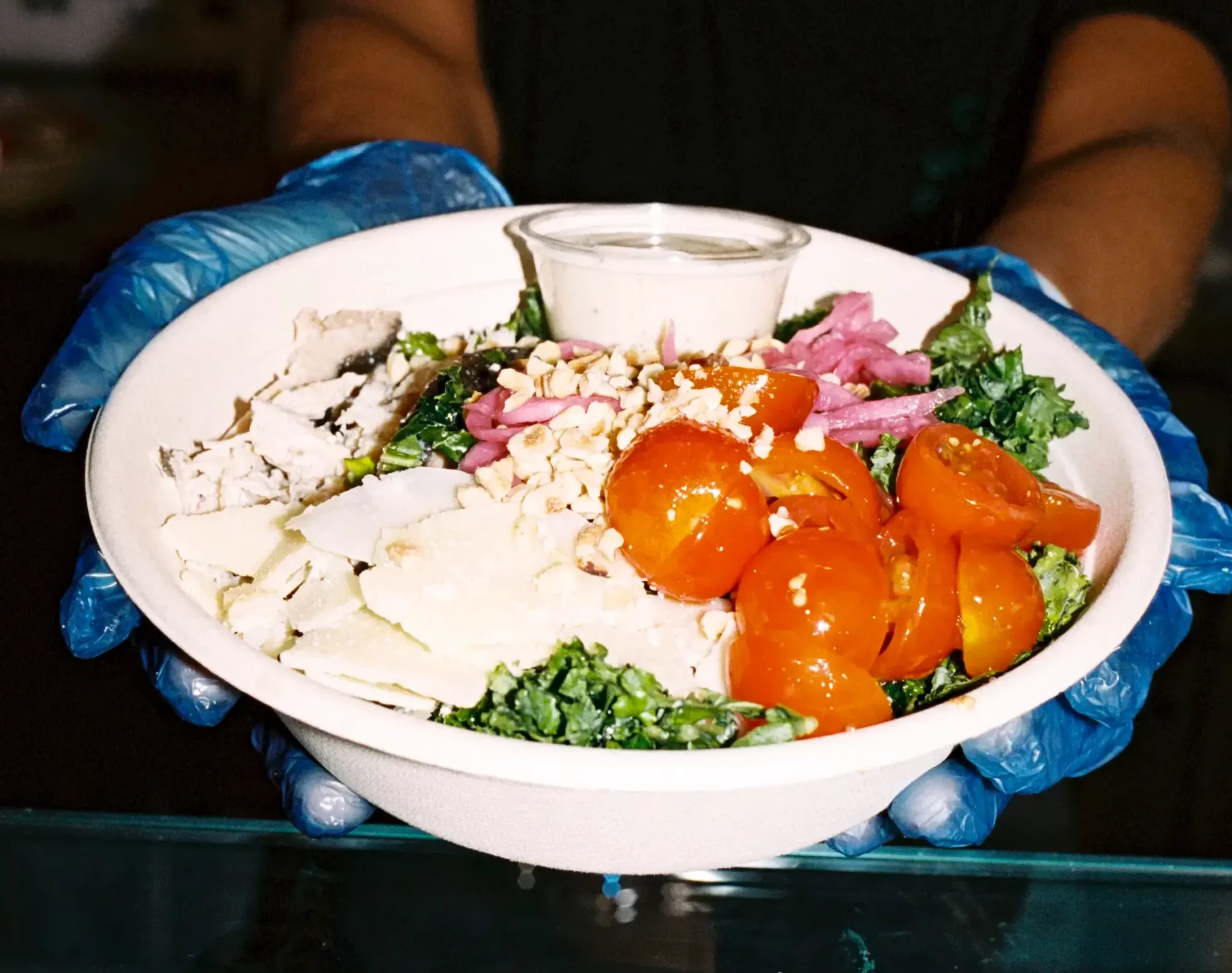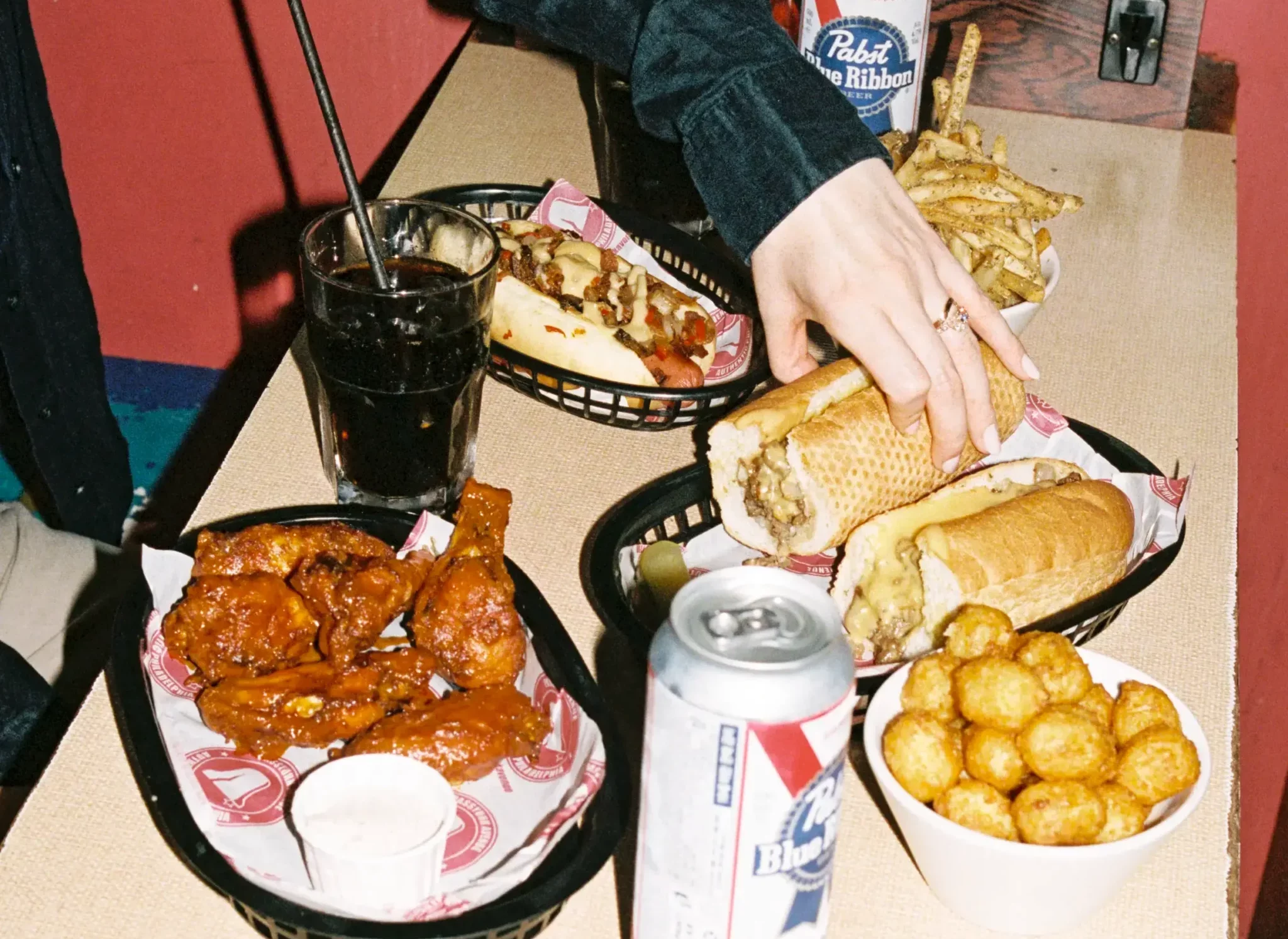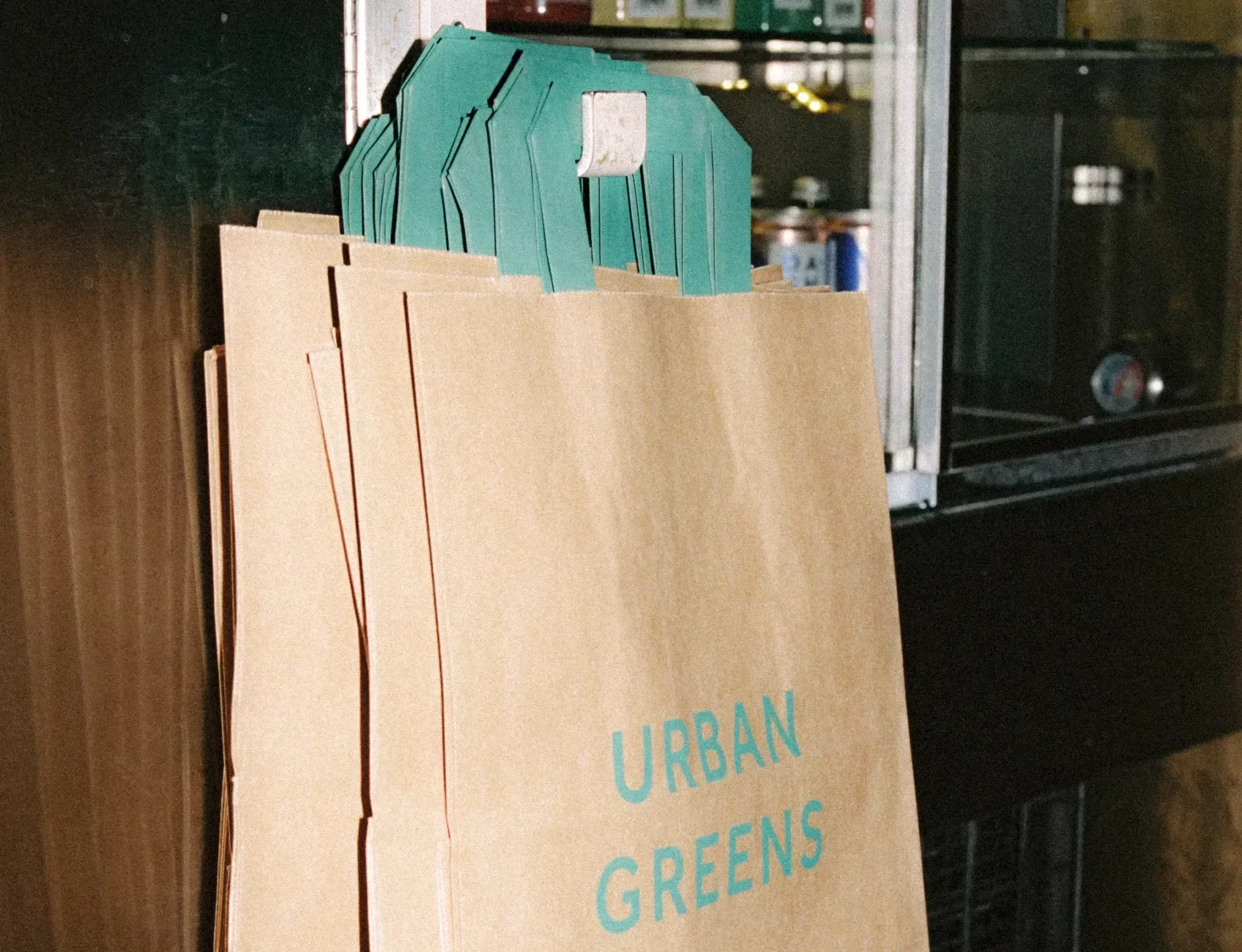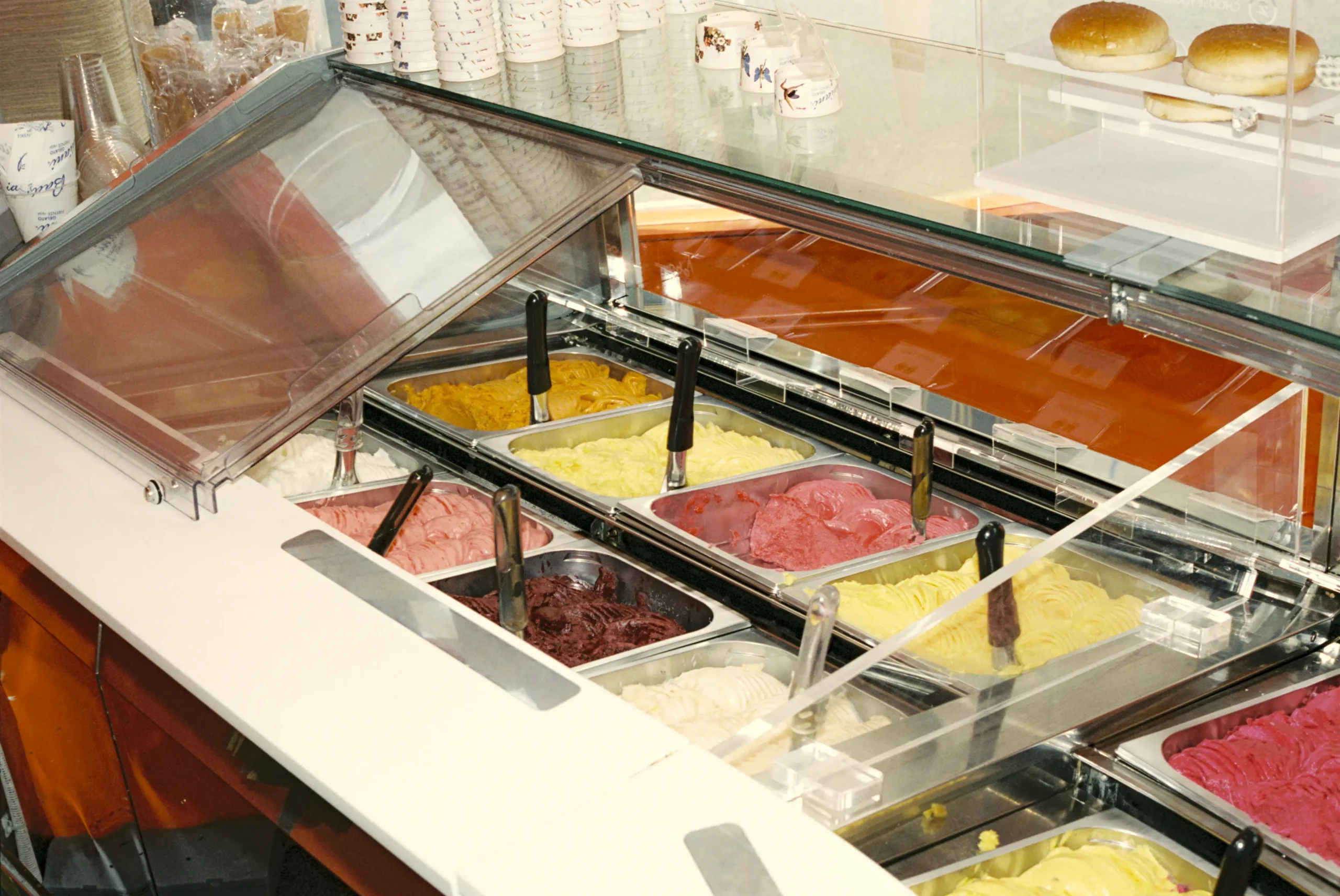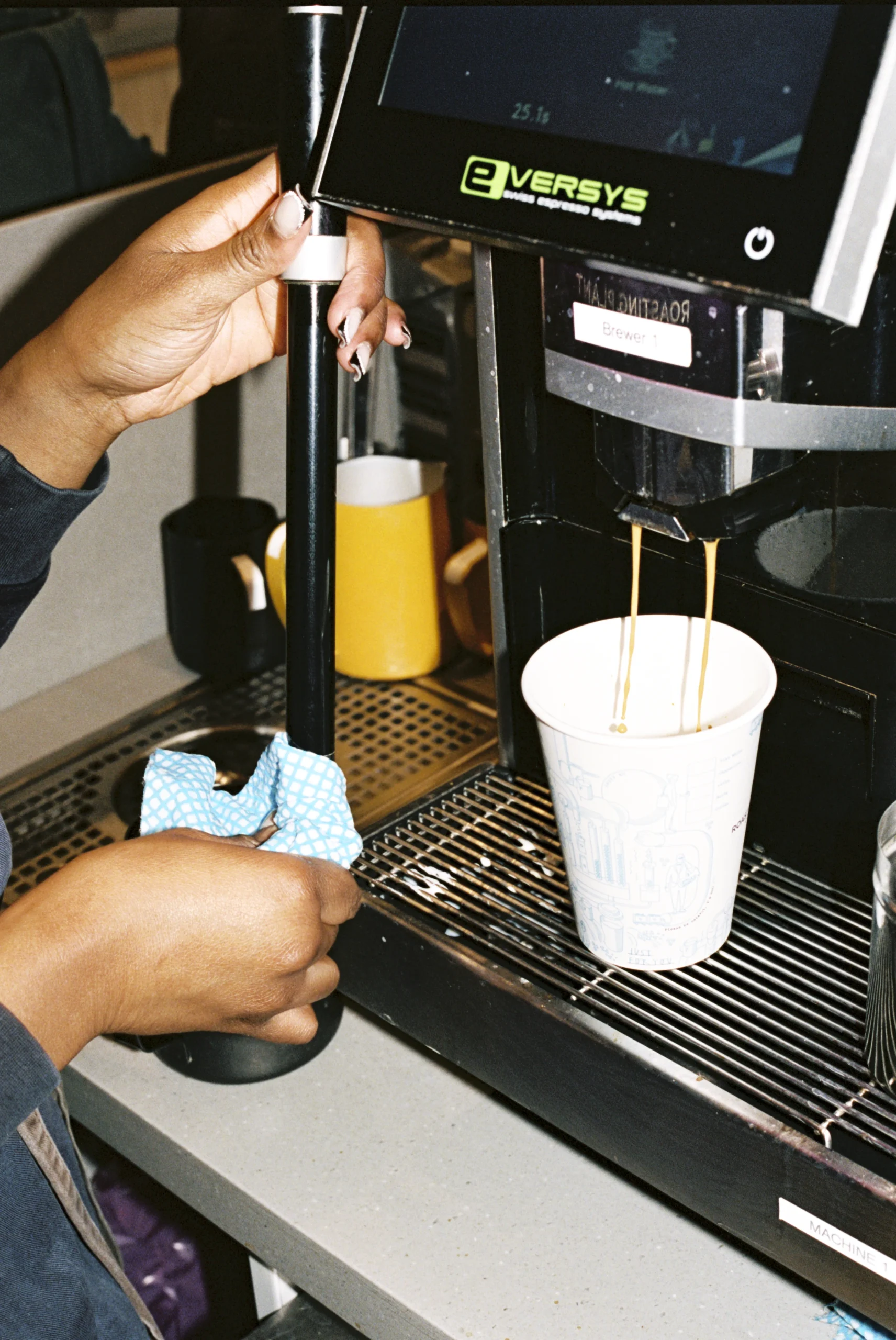Picture this – a restaurateur hunched over a table, crunching numbers, trying to crack the notorious gross profit challenge. Calculating costs, counting pennies, striving for that elusive sweet spot between profit and customer satisfaction.
Those were the days, weren’t they? When intuition, experience, and a dash of guesswork were the only ingredients needed to whip up a menu pricing strategy. No analytics, no algorithms—just good old-fashioned arithmetic.
But just as food trends have evolved from full English breakfasts to avocado toast, so has the approach to menu pricing.
So buckle up as we swap our trip down memory lane for a rocket ride into the future of restaurant economics! By the end of this article, you’ll know how to use technology to optimise your menu pricing for success.
Traditional Menu Pricing: A Synopsis
Traditionally, menu pricing was straightforward. Calculate raw materials + a dash of labour costs + a sprinkle overhead costs + your desired profit margin = done.
The primary objective was cost recovery, making it a simple but limited approach. But this method neglected factors like inflation, customer behaviour, and competitor pricing. Not to mention, a global pandemic and its lasting effect.
I think we can all agree how outdated traditional menu pricing was, and that the digital age brought a necessary shift. Nowadays, technology and cuisine form the perfect fusion dish – one that’s profitable.
Restaurant menus in 2023 should be crafted using the power trio: data analysis, artificial intelligence, and dynamic pricing. Consider these as tools to future proof your business.
Restaurant menus in 2023 should be crafted using the power trio: data analysis, artificial intelligence, and dynamic pricing. Consider these as your tools to future proof your business.
The Digital Age: Revolutionising Menu Pricing
We’re firmly in the heart of the digital age, a time of revolution that’s sent ripples across the food service industry.
At the forefront of this revolution?
The power trio we mentioned — data analytics, artificial intelligence, and dynamic pricing.
Let’s look at these in more detail.
Data analysis:
Decisions are no longer made based on gut feeling or intuition. Now, data is king, and analytics are the kingdom. Data analysis is key for insight into:
- Customer behaviour: Data provides valuable insights into customer behaviours, patterns, and preferences. Like a compass steering your restaurant towards a higher Gross Profit (GP). It helps you price your menu items in line with their demand, maximising profitability in the process.
- Profitability: If it ain’t profitable, it shouldn’t be on your menu. From optimising portion sizes and pricing to identifying profitable trends and spotting cost inefficiencies, your menu will thank you for looking into the numbers. Accurate, data-driven pricing leads to higher sales, and consequently, a fatter GP.
- Process: Data analysis digs into how operationally-friendly a dish is, which is key to smooth and successful kitchen flow and happy customers. Can teams make a certain dish during a busy, rush hour service? Can they make it consistently? Does it use other ingredients from your menu for cross optimisation? The numbers will tell you!
Artificial intelligence:
You can use AI to analyse the profitability of your menu, saving you time from manually doing it yourself. Review all the above data we mentioned — including menu costs, total sales, and net profits — at the click of a button.
AI can also pinpoint rising pricing that drives down profitability, helping you reduce costs and maximise those juicy profits. 💷 Not to mention, it can help track changes in customer purchases and behaviours so you can engineer your menu to its prime selling potential.
Think of AI as your restaurant’s intelligent co-pilot – keeping you one step ahead at all times and helping you to compete in tough trading environments.
Dynamic pricing:
Dynamic pricing is a pricing method that involves changing prices to reflect demand. You’ve probably experienced it when booking a flight or hotel. If you’re trying to book during the summer or in school holidays, the prices increase.
Think of it as a mood ring, changing its hue based on the time of the day, demand, and other factors.
It isn’t as common in the restaurant industry, but it can be a very successful strategy. For example, if you know that weekday lunch times are generally quiet, you could offer a discount or a lower prices to entice more customers.
On the flip side, you can boost prices during peak times. It allows restaurants to strike while the iron is hot and optimise their revenue.
So there you have it, the age of digital menu pricing, where technology and cuisine form the perfect fusion dish. It’s like pairing a robust red wine with a well-cooked steak—an irresistible combo that you can’t help but indulge in!
How to Embrace Technology in Menu Pricing
Folks, it’s time to welcome techno-wizardry in menu pricing strategies!
Let’s take a look at how you can incorporate technology into your menu pricing strategy.
Use Data Analysis
Data analysis, my friends, is your secret weapon in the battle for profitability. It’s the culinary compass that navigates the often turbulent waters of menu pricing, steering your restaurant towards a higher GP.
Let’s dive into how you can use data analysis to increase your GP and boost your bottom line.
Optimise Menu Prices
Data analysis is a restaurateur’s best mate when it comes to menu pricing. By unveiling patterns in your customers’ preferences and purchasing behaviour, you can price your dishes more strategically.
Does your lamb shank fly off the shelves every Friday night? Perhaps it’s time to rethink its pricing strategy. Accurate, data-driven pricing leads to higher sales, and consequently, a more handsome GP.
Analyse Menu Prices for Multi-Location Restaurants
It can also help you optimise menu prices across different locations.
Consider your thriving restaurant business spread across 15+ locations. Each location has its unique crowd, vibe, and consumption patterns. Serving a consistent menu across all these locations is essential for brand recognition, but should the prices be the same everywhere?
Suppose your signature roast chicken priced at £20 is a bestseller in most locations, contributing significantly to your GP. However, in three of your locations based in more vegetarian-friendly neighbourhoods, the roast chicken sees fewer takers.
This is where data analysis swoops in to save the day. It helps you make informed decisions about pricing based on the individual performance of each restaurant location! You can spot unique patterns and tailor your pricing strategy accordingly.
Update Portion Sizes
Data analysis can also help optimise portion sizes across different locations, which can impact your GP.
Imagine a Seafood Paella, which costs £18 and is served in generous portions. While it might be a hit in locations with larger groups or families, in areas with more single or couple diners, the large portion size might be a deterrent.
This means you’re spending more money on ingredients, more time preparing the food, and you’re increasing your food waste. Not ideal.
Analysing sales and feedback data could reveal this trend, allowing you to introduce a smaller portion at a lower price in specific locations. The reduced portion size would bring down your cost, and a strategic price point could maintain or even enhance your GP per serving.
Identify Profitable Trends
Staying in tune with the market trends is not just good for popularity — it’s also good for your GP.
Data analysis helps you detect emerging food trends. For example, the increasing demand for locally sourced ingredients, the latest craze for Korean street food, or the rise of the vegan movement. 🌱
Knowing what’s hot allows you to price your food items in line with their demand, providing customers with foods they want to eat and maximising your profitability in the process.
Monitor the Competition
Keeping a keen eye on your competitors’ pricing strategy is another benefit of data analysis.
You can identify how your prices compare to competitors, what pricing structure they use, and what dishes they’re serving. As a result, you can price your dishes competitively, ensuring that you not only attract new customers, but maintain a healthy GP. It’s a win-win!
Spot Cost Inefficiencies
Lastly, data analysis highlights any cost inefficiencies that may be eating into your GP. Are the imported Sicilian olives really worth their cost, or can a local alternative do the trick without compromising quality? Identifying these areas of wastage and addressing them can significantly boost your GP.
Set Key Performance Indicators for GP Optimisation
When it comes to steering your restaurant business towards a higher GP, Key Performance Indicators (KPIs) are your guiding stars. . These quantifiable metrics allow you to evaluate your business’s performance, track progress, and make data-driven decisions. But with a galaxy of KPIs out there, which ones should you keep an eye on to optimise your GP? Let’s take a look.
Food Cost Percentage
Food cost percentage measures the cost of the ingredients for a menu item as a percentage of its selling price. To calculate it, you divide your food costs by your total revenue, and multiply it by 100.
Keeping a close tab on this metric helps you price your menu items as profitably as possible. If the percentage is too high, you might need to adjust your pricing or renegotiate supplier costs.
The ideal food cost percentage in a restaurant varies. But typically speaking, the lower the percentage, the better for business!
Gross Profit Margin
The gross profit margin indicates the profitability of a particular dish or your overall menu. It’s the difference between net sales (gross revenues minus returns, allowances and discounts) and the cost of goods sold (COGS), divided by the selling price, multiplied by 100.
Tracking this KPI helps you identify which items contribute most to your GP and should be promoted more.
So what should you be aiming for?
Similar to calculating your ideal food cost percentage, the range for gross profit margins varies depending on different factors (like outgoing costs, restaurant location, and so on).
To find your ideal gross profit margin, you’ll need to review your current margins to get a baseline. Then, you can figure out what the ideal margins look like and whether they’re achievable!
Side note:💡 With Nory, you can track the gross profit split between food and beverages to understand exactly how much money you make from food and drink sales!
Contribution Margin
The contribution margin measures the profitability for individual items sold. It’s calculated by subtracting the variable costs (like ingredients) from the revenue of that item. Dishes with high contribution margins are generally better for your GP.
Sales per Head
Sales per Head is the average revenue earned per customer. By tracking this KPI, you can see how much, on average, your customers are willing to spend. This can inform your pricing strategy and help identify opportunities to upsell or cross-sell to boost GP.
Popular and Profitable Items
This KPI doesn’t have a fancy formula, but it is crucial. It pinpoints the dishes that are both popular (high sales volume) and profitable (high contribution margin). These are your star players, and promoting them can significantly boost your GP.
Menu Item Performance
Tracking your menu item performance involves analysing the sales data of each menu item across different times of the day, days of the week, and seasons. This helps you to spot underperforming items and peak times, informing your dynamic pricing strategy and helping to increase GP.
In a nutshell, by keeping a close eye on these KPIs, you can draw valuable insights and make strategic decisions that can significantly enhance your GP. It’s like having a magical map that leads straight to the treasure chest of profitability. All aboard the ship of data-driven success!
Leverage Artificial Intelligence
Next on our menu is the wonder that is artificial intelligence, or AI. Now, we’re not talking about robots serving you Eggs Florentine (though, wouldn’t that be smashing!). No, we’re talking about AI’s ability to predict future trends quicker than a soufflé can sink. This crystal ball-like power lets restaurants adjust their prices in advance, ensuring they’re always riding the crest of profitability. And if that’s not enough, AI also moonlights as a master detective, spotting patterns and correlations that Sherlock Holmes would tip his hat to.
Let’s walk through a couple of the ways you can use AI to boost your profits.
AI in Workforce Management
“Right staff, right place, right time” – the mantra of efficient workforce management. But achieving this perfect trifecta can be as tricky as nailing the perfect soufflé.
Enter AI. Artificial intelligence can process and learn from historical data to predict staffing needs.
Say, every Saturday, your Chelsea location gets a rush around lunchtime, whereas your Shoreditch location sees a dinner rush. AI can analyse these patterns and predict the optimal staffing level for each location and time slot. As a result, you can create a demand-based schedule to reduce overstaffing or understaffing mishaps.
Further, it can even account for factors like special events, local holidays, or that big football match that has everyone flocking to the pub. With AI at your service, you’re not just predicting the workforce needs; you’re crafting an efficient, cost-saving staffing strategy.
AI for Inventory Management
Imagine being able to predict exactly how much fresh produce to order, down to the last sprig of parsley. Well, AI can turn this fantasy into a reality. With its pattern-recognising prowess, AI can anticipate your inventory needs based on factors such as historical consumption rates, seasonal trends, and even upcoming weather forecasts (because everyone craves a good stew on a cold day!).
This predictive power helps prevent overstocking and understocking. No more wilted lettuce going to waste or running out of salmon on a busy Friday night. It ensures you have the right ingredients at the right time, optimising your inventory turnover and saving costs. This streamlined inventory management significantly contributes to optimising your GP, making AI an essential ingredient in your recipe for success.
Implementing Modern Menu Pricing: Practical Steps
Navigating the GP challenge in this digital age might feel like taming a wild, double-headed beast. But fear not! Here’s a practical, step-by-step guide that can help you slay this challenge and emerge victorious.
Understanding Your Restaurant’s Unique Selling Points (USPs)
Identifying and understanding your restaurant’s USPs is the first stepping stone in your journey towards strategic menu pricing.
What’s cooking in your restaurant that’s got people raving? Is it your farm-to-fork ethos, your grandma’s secret pasta recipe, or perhaps, your cutting-edge vegan menu? And how do you stand out from other restaurants offering similar food?
Answering these questions will help you pinpoint the value in what you’re offering, which directly influences how much customers are willing to pay. If no one else is offering a farm-to-fork service, you can potentially bump the prices up.
Incorporate Market Research
Knowledge, they say, is power.
And in this case, it’s the power to price your menu optimally.
By performing market research, you’ll get a better idea of industry performance. This includes staying updated with the latest market trends, understanding your competitors’ pricing strategies, and studying your customers’ spending habits can offer a goldmine of insights.
This intel can guide your pricing decisions, helping you strike that sweet spot between staying competitive and maintaining a healthy GP.
Using Menu Engineering
Menu engineering can help you turn your menu into a money-making machine, and boy, is it exciting.
Let’s break it down.
What is Menu Engineering?
Menu engineering helps you optimise your pricing by evaluating your sales data and food costs. It requires getting into the nitty-gritty of each dish on your menu. How well are they selling? What’s their cost percentage? This data guides which dishes to feature and their menu price. From there, menu engineering involves categorising menu items based on their popularity (sales volume) and profitability to positively impact your GP.
Here are the four main categories
- the ‘stars‘ (high profitability, high popularity),
- the ‘work-horses‘ (low profitability, high popularity)
- the ‘puzzles‘ (high profitability, low popularity)
- and the ‘dogs‘ (low profitability, low popularity).
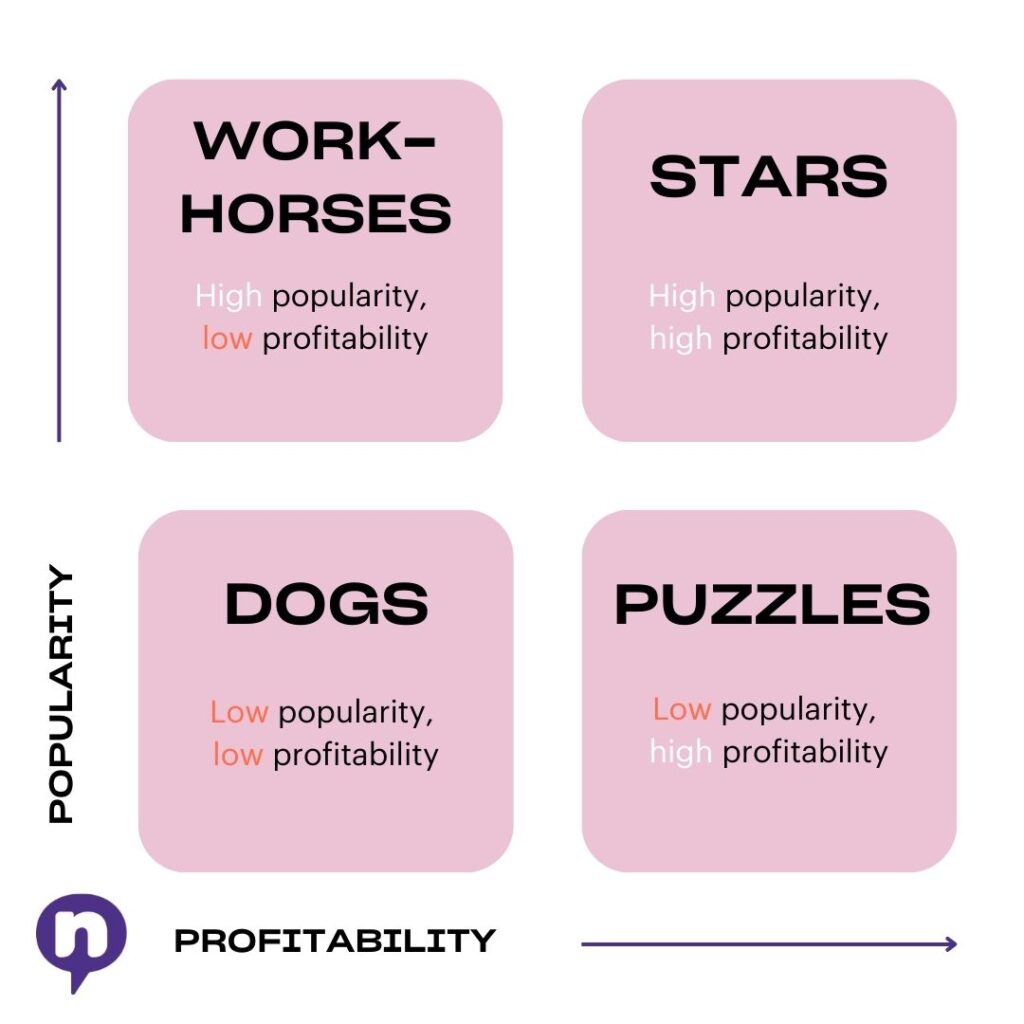
Once you’ve got these classifications, you can get to work on your pricing strategy. Let’s walk through how that might look:
- Promote Your Stars: These are your money-makers, the dishes that your customers can’t get enough of and also bring in a hefty profit. You’ll want to make these items as prominent as possible on your menu. Consider placing them in the ‘golden triangle’ – the pattern that customers’ eyes naturally follow when reading a menu (middle, top, then bottom). And why not highlight them with attractive colours, borders, or images?
- Optimising Your Work-Horses: These dishes are popular, but not very profitable. To optimise these items, you could slightly adjust the pricing or portion size, or even tweak the recipe to include lower-cost ingredients without compromising the taste.
- Unlocking the Potential of Your Puzzles: These items are profitable but not popular. Maybe they just need a little marketing love? Think about renaming them, rewriting the description, or moving them to a more prominent spot on the menu. You could also train your staff to upsell these items.
- Dealing with the Dogs: Ah, the ‘dogs’. These items are neither profitable nor popular. It might be time to consider whether these dishes are taking up unnecessary space on your menu. Could they be replaced with potentially more profitable items?
Menu engineering, when used correctly, can be a real game-changer in tackling the GP challenge. It’s a practical, hands-on approach that gives you the insights you need to make data-driven decisions for your menu and pricing strategy. So, why not put on that detective hat and start analysing?🕵️♂️
3 Ways to Overcome Challenges in Modern Menu Pricing
As we embark on this exciting journey of modern menu pricing, it’s prudent to remember that every silver lining has a cloud. But fear not, for every challenge brings with it an opportunity to learn, grow, and shine. Let’s explore some of these hurdles and how to leap over them.
1. Manage Customer Perceptions
Imagine this: You’re at your favourite eatery, eagerly scanning the menu for your usual dish, only to find that its price has shot up since your last visit. That stings, doesn’t it?
Fluctuating prices can ruffle a few feathers, and items sporting a higher price tag might be seen as overpriced, causing customers to shy away. But here’s the trick – perception management. It’s about communicating the reasons behind these changes in a clear and transparent manner.
For instance, if a price increase is due to the use of higher-quality ingredients, let your customers know. After all, who wouldn’t mind paying a bit extra for a premium, free-range chicken roast compared to one made with standard ingredients?
Also, remember to make any price changes gradually and reasonably, instead of steep hikes overnight. You’d be surprised at how understanding customers can be when they feel valued and informed.
2. Keep up with Market Trends
The only thing constant in the restaurant industry is change. With ever-evolving market trends, consumer preferences, and competitor strategies, staying still is not an option. Your pricing strategy needs to be as flexible as a yoga instructor!
This means regularly revisiting your strategy, analysing the latest sales data, keeping an eye on the market, and making necessary tweaks to stay relevant and profitable. Remember, what worked a year ago may not be the golden ticket today.
So, stay agile, keep learning, and don’t be afraid to make changes.
3. Create A Contingency Plan for Technological Hiccups
Navigating the digital landscape can sometimes feel like steering a ship through stormy seas, especially when unexpected glitches arise. However, even in the face of technological adversity, a well-structured contingency plan can ensure smooth sailing.
Let’s look at a practical example of a restaurant business with 10 locations, highlighting the key components of an effective contingency plan.
- Identify Potential Issues: The first step is to identify the technological challenges that could potentially disrupt your business. These could include software crashes, data breaches, hardware malfunctions, or internet connectivity issues. The key is to anticipate these problems before they arise and plan for them accordingly.
- Create Back-Up Systems: Having reliable backup systems in place is absolutely essential. This could be as simple as having secondary POS systems or tablets that can be used in case your primary system fails. Regularly backing up data to a secure cloud service can also help you quickly recover in case of a data loss.
- Use Reliable Tech Support: Having access to prompt and reliable tech support is critical. Your tech support should be well-versed in the systems you use, able to respond swiftly, and, most importantly, able to troubleshoot effectively under pressure.
- Train Employee: Your staff should be trained to handle minor technological issues that might arise during their shifts. They should know the basics, such as rebooting systems, switching to backup systems, and whom to contact for immediate tech support.
- Diversify Your Tech Stack: For a restaurant business with multiple locations, using a diverse range of technology solutions can add an extra layer of security. If one software or service encounters issues, you can rely on others to keep your business running. This could mean using different providers for your POS system, reservation software, online ordering platform, and data analysis tools.
- Perform Regular Maintenance and Updates: Ensuring regular maintenance and updates of your software systems can help prevent many technological hiccups. Outdated software is not only more prone to crashes but can also be a security risk. Plan regular software audits to ensure all systems are up to date and running optimally.
- Insurance: Finally, having adequate insurance coverage can protect your business from significant financial losses in the event of major system failures or cyber-attacks.
With these measures, your restaurant business will be well-equipped to handle any digital storm that comes its way.
Optimise Your Pricing with Restaurant Technology
Embracing the modern approach to menu pricing in the digital age is more than just a trend—it’s a necessity. By understanding the traditional GP challenge, leveraging technology, and overcoming associated hurdles, restaurateurs can truly optimise their menu pricing for increased profitability. Now, isn’t that a recipe for success?
If you want to dip your toe in the water of restaurant technology, take a look at Nory. Our restaurant management software makes it easy to track your restaurant performance, manage your workforce, and optimise your menu to increase your profits.
Book a call to get started!
FAQs
How does data analysis assist in menu pricing?
Data analysis provides valuable insights into customer behaviour, preferences, and market trends. These insights can be used to optimise menu pricing.
What is the role of AI in menu pricing?
AI can help predict future trends, allowing restaurants to adjust their prices in advance. It can also help identify patterns and correlations that might otherwise go unnoticed.
How does dynamic pricing work in restaurants?
Dynamic pricing allows restaurants to fluctuate their prices based on factors like demand, time, and more. For instance, prices may be higher during peak dining hours and lower during off-peak hours.
What is menu engineering?
Menu engineering is a study that involves analysing the profitability and popularity of menu items. This analysis can then be used to adjust the menu and pricing strategy.
What are the challenges of modern menu pricing?
Challenges can include managing customer perceptions of price changes, keeping up with market trends, and handling technological hiccups. It’s important to have strategies in place to tackle these issues.
